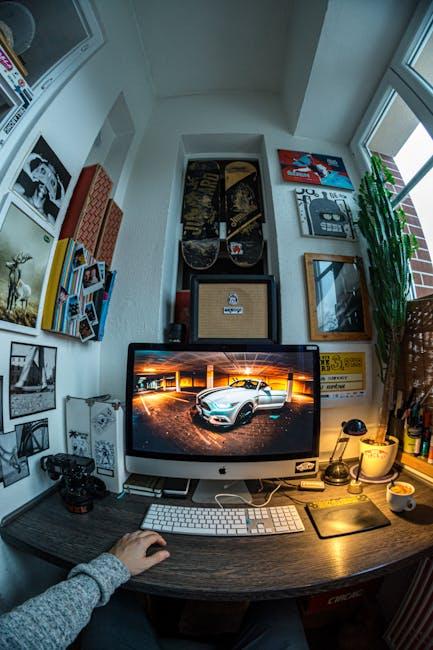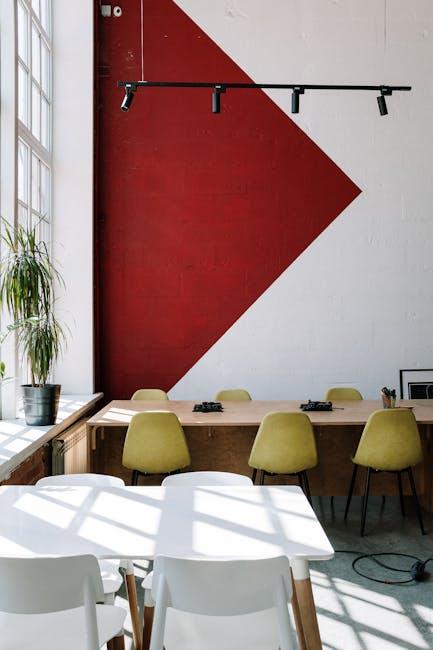In today’s world, where the boundary between work and home blurs, the space you choose to tackle your tasks holds more power than ever before. Designing a home workstation is no longer just about fitting a desk and chair into a corner-it’s about creating an environment that nurtures both posture and focus. A thoughtfully crafted workspace can transform hours of sedentary work into a symphony of comfort and concentration, supporting your body while sharpening your mind. This article explores the art and science of setting up a home workstation that promotes healthy posture and sustained focus, turning your everyday work routine into a seamless, productive experience.
Creating an Ergonomic Foundation for Lasting Comfort

Building the perfect foundation for comfort starts with selecting furniture that naturally supports your body’s alignment. An adjustable chair with lumbar support ensures your spine maintains its natural curve, reducing strain during long hours of work. Your desk height should allow your forearms to rest parallel to the floor, minimizing tension in your shoulders and wrists. Integrating a footrest can also promote better circulation and reduce pressure on your lower back, completing a setup that allows for healthy posture without conscious effort.
- Chair: Adjustable height and lumbar support.
- Desk: Appropriate height for neutral wrist positioning.
- Footrest: Enhances circulation and reduces fatigue.
- Monitor Placement: Top of the screen at eye level.
Small adjustments can make a significant difference in your daily comfort. For example, positioning your monitor roughly an arm’s length away and at eye level prevents neck strain and reduces eye fatigue. Consider these key ergonomic dimensions:
| Element | Recommended Measurement |
|---|---|
| Seat Height | 16-21 inches from ground |
| Desk Height | 28-30 inches |
| Monitor Distance | 20-30 inches from eyes |
| Footrest Height | 4-6 inches |
Optimizing Lighting and Environment to Enhance Concentration

Creating the right ambiance for your home workstation isn’t just about aesthetics-it directly influences your ability to concentrate and maintain an effective workflow. Start by prioritizing natural light; position your desk near a window to soak up daylight, which boosts mood and alertness. However, be mindful of glare on screens by using adjustable blinds or sheer curtains. For evening work or dimmer rooms, integrate multiple light sources such as a warm desk lamp combined with overhead lighting. This balanced combination reduces eye strain and fosters a calming environment, essential for sustained focus.
Beyond lighting, environmental factors play a subtle yet critical role in concentration. Consider:
- Noise control: Use noise-cancelling headphones or ambient sound machines to mask distractions.
- Air quality: Incorporate plants or an air purifier to keep air fresh and invigorating.
- Temperature: Maintain a comfortable room temperature, ideally between 68-72°F (20-22°C), to prevent lethargy or discomfort.
| Lighting Type | Ideal Use | Benefits |
|---|---|---|
| Natural Light | Daytime work | Improves mood & alertness |
| Task Lighting | Focused activities | Reduces eye strain |
| Ambient Lighting | Overall illumination | Prevents harsh shadows |
Choosing Furniture That Supports Healthy Posture

Opt for furniture designed with ergonomic principles in mind to naturally encourage proper alignment. Chairs with adjustable height, lumbar support, and a seat depth that promotes even weight distribution are essential. When selecting desks, consider those with adjustable heights or the flexibility to alternate between sitting and standing. This versatility helps reduce strain caused by prolonged static postures and supports spinal health.
- Chair features: Adjustable lumbar support, swivel base, and breathable fabric
- Desk options: Adjustable height desks, compact desks with ergonomic curves
- Additional accessories: Footrests, monitor stands, and keyboard trays
| Feature | Benefit | Recommendation |
|---|---|---|
| Adjustable Chair Height | Aligns hips and knees at 90-degree angles | Essential |
| Lumbar Support | Maintains natural spine curvature | Highly Recommended |
| Standing Desk | Encourages movement and reduces fatigue | Optional but beneficial |
Incorporating Movement and Breaks to Sustain Focus

Integrating regular movement and short breaks into your work routine is essential for maintaining both physical well-being and mental clarity. Prolonged sitting can lead to muscle stiffness and decreased circulation, which gradually erodes focus. To counteract this, set a timer to remind yourself to stand, stretch, or take a brief walk every 30 to 45 minutes. Incorporating simple activities like shoulder rolls, neck stretches, or even a few calf raises can significantly reduce tension and reset your concentration levels, making your productivity more sustainable throughout the day.
Creating a balanced schedule that mixes focused work periods with intentional breaks also supports cognitive function and helps prevent burnout. Consider trying these quick, impactful break ideas:
- Micro-meditations: 2-3 minutes of deep breathing or mindfulness.
- Desk yoga: Gentle stretches targeting key areas prone to tightness.
- Movement circuits: Short bursts of light activity, such as stepping or light jumping jacks.
| Break Type | Duration | Benefit |
|---|---|---|
| Stretching | 3-5 min | Reduces muscle tension |
| Light Walk | 5-10 min | Improves circulation |
| Breathing Exercises | 2-3 min | Enhances mental focus |
To Conclude
Creating a home workstation that champions both posture and focus is more than just a design challenge-it’s an investment in your well-being and productivity. By thoughtfully blending ergonomics with elements that inspire calm and concentration, you transform a simple workspace into a sanctuary of comfort and creativity. As you embark on tailoring your environment, remember that the best designs evolve with you, adapting to your needs and nudging you toward better habits day by day. In the end, a well-crafted home workstation is not just where you work-it’s where your best ideas come to life.














